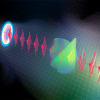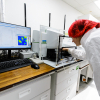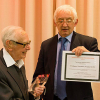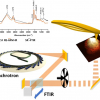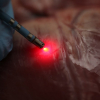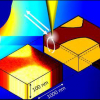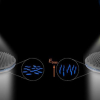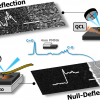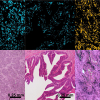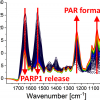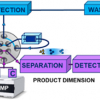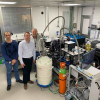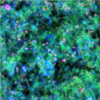Infrared Spectroscopy News
The current state-of-the-art IR spectroscopy method can make approximately 1 million observations per second. University of Tokyo researchers have developed a new method about 100× faster.
The mass of microplastics in the Atlantic Ocean has been significantly underestimated.
Nominations for the 2020 Norman Sheppard Award are invited.
Synchrotron infrared nanospectroscopy has been used for the first time to measure biomolecular changes induced by a drug (amiodarone) within human cells (macrophages) and localised at 100 nm scale, i.e. two orders of magnitude smaller than the IR wavelength used as probe.
NIR reflectance spectral maps of heart tissue can distinguish between fat and muscle tissue in the heart and could help improve delivery and monitoring of ablation therapy.
Researchers from the Nanooptics Group at CIC nanoGUNE (San Sebastian, Spain) have shown that nanoscale infrared imaging can analyse materials up to 100 nm below the surface.
Researchers have integrated a photo-patterned liquid crystal into a dielectric metasurface to achieve achromatic and chromatic focusing with a single metalens.
Researchers at the Beckman Institute for Advanced Science and Technology have developed a new method to improve the detection ability of nanoscale chemical imaging using atomic force microscopy.
Infrared microscopy can automatically detect the type of intestinal tumour within 30 minutes. These results are then used to make targeted therapy decisions.
The presence of kaolinite haloes surrounding ancient fossils is believed to have kept destructive bacteria at bay, stopping decay. The small molecular differences of the clay were analysed with the synchrotron infrared microbeam at Diamond Light Source.
Using a smartphone camera and spectral super-resolution spectroscopy, anaemia and blood disorders can be assessed outside the lab.
Researchers from the University of Konstanz have observed in real time the molecular processes that take place at DNA strand breaks by means of infrared spectroscopy.
Södra, a pulp producer in Sweden, is installing its second FITNIR analyser for online pulp liquor monitoring.
Applications are invited for these prestigious awards administered by the Association of British Spectroscopists (ABS) Trust.
A team of researchers from the Fraunhofer Institute for Applied Optics and Precision Engineering IOF in Jena has developed a quantum imaging solution that can produce detailed insights into tissue samples using extreme spectral ranges and less light.
A vis/NIR spectrometer developed by EU researchers allows food producers to better monitor their products for the presence of acrylamide.
A new research project in partnership between academia, companies and the Netherlands Forensic Institute to develop ways to chain analytical techniques together to gain complementary information.
Researchers working at the SOLEIL synchrotron facility have observed hydrogen in its metal phase for the first time.
Metabolic diseases such as diabetes and obesity are ever more common globally. In addition to genetic disposition, lifestyle contributes strongly to their prevalence. Precise monitoring methods are needed in order to, for example, evaluate how a change in diet or exercise affects disease and its metabolic characteristics.
FT-IR spectrometer being used on-board all-women sailing voyages investigating ocean plastic pollution causes and solutions.

